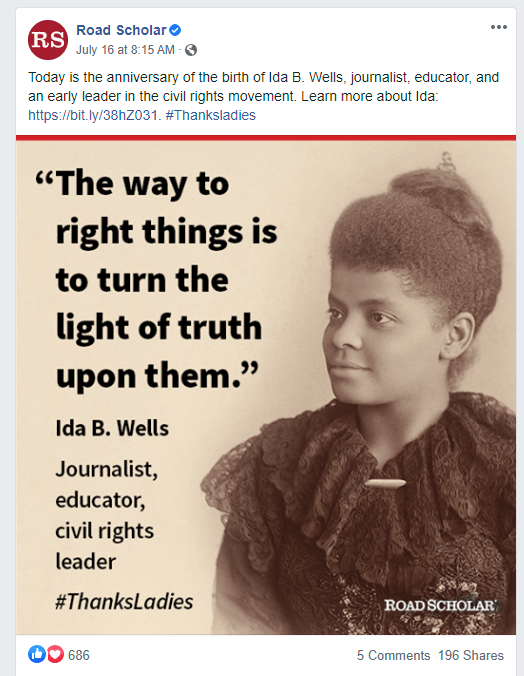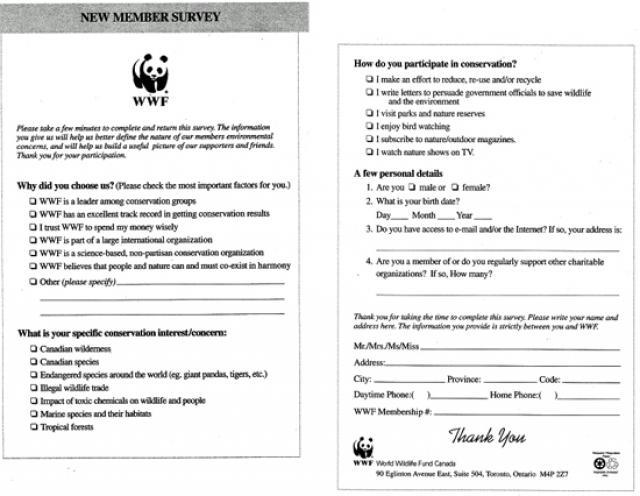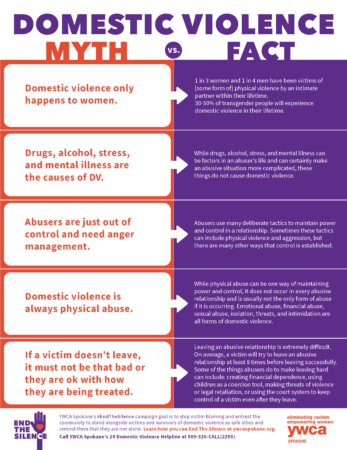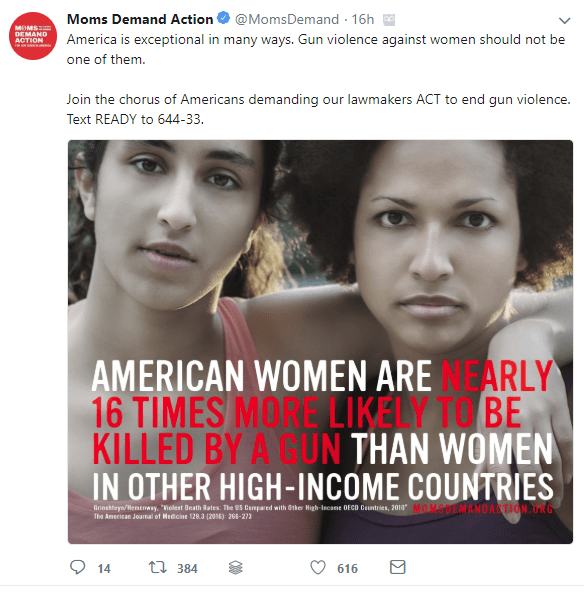 This is often the hardest part of social media management and planning for nonprofits – identifying a target audience.
This is often the hardest part of social media management and planning for nonprofits – identifying a target audience.
I know, I know (trust me) – your nonprofit has 10+ different audiences that you need to communicate with on a regular basis.
This is normal.
But, in order to get real traction on social media, identifying a focal point—a target audience—is critical for you to define where you spend your time on social media, how often you will post, and what you will post about.
If you don’t know who you are talking to, how will you know what to say and how to say it?
Message clarification and refinement can only come AFTER audience identification.
What do you want people to do?
What action do you want them to take?
What are you going to say that will inspire and mobilize your target audience – so much so, that they take the action that you want?
How can you say it in a way that will get them from passive to passionate?
It is only after you have successfully defined these three key areas—goals, target audience, and message—that you can brainstorm the unique strategies, platforms, and digital tools to employ.
Most people are impatient and want to get right to the tweeting, the Instagramming, the livestreaming – and I appreciate that enthusiasm.
However, creating a plan with a jump-right-in, “tools first, strategy last” mentality is probably what got you into this mess in the first place.
Until you know exactly what you want to accomplish, whom you need to spur into action, and what you need to say to get them engaged, you will just be spinning your wheels on social media for little to no results.
Audience Identification
Who are you talking to on social media?
It may surprise you to know that the correct answer is not “everyone with a pulse and a bank account.”
Before choosing digital platforms, mobile apps, and video editing software, you need to understand and be able to identify the needs and behaviors of your target audience.
By “target audience,” I mean the group of people with whom your nonprofit aims to engage on social media, towards the ultimate accomplishment of your goal.
To demonstrate just some of the benefits of target audience identification on social media, I’ll share a client story about Road Scholar, formerly Elderhostel, a nonprofit in Boston, MA.
Their mission is to inspire adults to learn, discover, and travel.
When they came to us they had been posting inconsistently on social media for about a year, slowly growing their fan base but not at the rate that they wanted.
They also were getting very little engagement from their posts, and they wanted to understand why.
The problem was that they didn’t understand who they were talking to on social media, why these people would pay attention to them, nor did they have identified goals for their efforts.
We helped them set social media goals and then identify the target audience that they would need to reach to accomplish their goals.
You cannot effectively figure out who you want to reach if you don’t know why you are communicating with them.
In the beginning, Road Scholar’s goal was simply “to raise awareness of and interest in their educational learning trips for older adults.”
To better help them get more engagement and shares, especially on Facebook, we needed to create an audience persona – a made-up amalgamation of a person that encapsulated all the characteristics of their ideal social media community member.
After analyzing their donor base, the people who took their educational trips, and their social media audience, we created this persona. We called her “the Funky Grandma.”
The Funky Grandma is an older woman who likes to learn, likes to travel, and enjoys adventure.
She is interested in women’s issues and advocating for older adults.



Creating and sharing engaging content became much easier and more intuitive once Road Scholar knew who they were speaking to on social media.
Every post has to pass one test: Would the Funky Grandma like it? If so, it’s posted. If not, it’s reworked.
Road Scholar’s engagement on Facebook skyrocketed, with a 500% increase in engagement and a doubling of their fans and followers within a year of using this persona to create and vet social media posts.
It’s important to note that just because all social media posts are designed with the Funky Grandma in mind, they do not exclusively appeal to just one segment of Road Scholars’ diverse supporter network.
Targeted messaging does not necessarily exclude other groups that may also be interested in the content.
For example, I often enjoy Road Scholars’ Facebook posts, and I am about 25 years younger than the target demographic (although my goal in life is to become the Funky Grandma).
Having a specific, well-defined person in mind when you share on social media will dramatically help your focus and prevent you from throwing stuff up to see what sticks, but it won’t stop others from liking it also.
So how can your nonprofit identify your own target audience persona, similar to the Funky Grandma?
Target audience identification involves three main parts:
First, refer back to the goal that you set for your nonprofit on social media. Which group is best suited to help you accomplish your goal?
Second, do some research to figure out who is already with you on social media. Which segments already make up your social media communities?
Third, think about who you aspire to connect with on social media. This group must be aligned with your goals and cannot simply be an audience you hope to engage because your Board told you to, or because you read a newspaper article about Millennials. Ask: Why is this audience vital to achieving your goals? Where does this particular group of people spend time online?
Refer Back to Your Goal
Think strategically about the group of people that you need to reach in order to accomplish your goal for social media.
Different goals require reaching out to and engaging different audiences.
Different audiences respond to different messages and participate on different social media platforms.
Complete strangers who know nothing about your work are much less likely to donate and to volunteer their time than a group of people who follow you on social media, have made a donation already, and signed up to get your email updates or attend your events.
Use the table below as a guideline and example to follow when matching your target audience segment to your social media goal.
| Goal | Target Audience |
| (Example) To use social media to become an indispensable part of the community, so much so that even people that do not directly use our services and benefit from our programs would miss us if we were gone. | (Example) People who know us and love us and may be willing to spread the word to others. People who know a little bit about us and want to learn more. Community members involved in our work who have influence, including legislators, media contacts, partner organizations. |
| (Example) To build an active and motivated online community ready and willing to support our work and advocate for our issue. | (Example) Current online audience members who have advocated for us in the past or indicated an interest in advocacy. |
| (Example) To drive donations for our year-end fundraising campaign. | (Example) Current donors and prospects, lapsed donors, staff, Board, volunteers. |
Who Is Already With Us?
Unless you are starting 100% from scratch with no database, email list, and social media accounts, you already have a group of people (even if it’s a small group) who have raised their hands to say that they want to hear more from you.
When revamping your social media strategy, it’s a heck of a lot easier to focus on the group of people who have already opted in than trying to grab the attention and interest of complete strangers.
To learn about the demographic makeup and other characteristics of your current digital and social media following, you can:
Use the insights and analytics already available within each social media platform.
If you have a presence on any major social media platforms, and if you have administrator privileges to the account, you have access to information about your audience, your content performance, and more.
Looking at Twitter Analytics, Facebook and Instagram Insights, and the back-end of your emails can help provide a clearer picture of your current fans and followers.
Three buckets of information to look for in your analytics:
- What is the demographic makeup of your fans?
- Age, location, gender?
- Where do they predominantly reside, in which time zones?
- Which topics tend to elicit the most engagement?
- What spurs the greatest amount of comments and share?
- What gets a lot of likes or reactions?
- Which types of content—photo, video, text—generally get the most engagement?
- When you post a link to an article, does that resonate more than a text update?
- Do people love your video content?
- Does live video work better than recorded video?
Sign up for a basic social media measurement tool.
Free and low-cost social media management and measurement tools, such as HootSuite or Buffer, can help you run basic reports on your audience demographics and other characteristics.
Most social media management and measurement tools allow for a free 30-day trial, and many have nonprofit discounts.
You can also explore investing in a more robust (and more costly) social media measurement platform, such as HubSpot or Sprout Social, to acquire more detailed information to match to your database and your records.
Ask your audience directly.
Interact offline with your online community!
Call them on the phone, send a postcard, ask at an in-person event, host a Facebook live.
Conduct a poll on Facebook, Instagram, Twitter, LinkedIn, SurveyMonkey – anywhere you can reach out to your current audience.

You can also send out a simple email survey to get a better picture of your current stakeholders and their online habits.
Sample questions may include:
- Are you familiar with social media? Social media includes but is not limited to Facebook, LinkedIn, Twitter, YouTube, blogs, etc.
- If yes, which social media sites do you interact with? List the top 10 to 12 social media sites and platforms.
- How much time do you spend engaging in social media per week? How much is personal use? How much is professional use?
- What would motivate you to interact with our brand in social media? (entertaining videos, helpful content, impact stories, etc.)
- What other brands or organizations do you engage with on social media? This could take the form of blogs that you read, Facebook fan pages, or Twitter feeds that you follow.
If you need more information on your target audience, more comprehensive online surveys could be the answer.
I also suggest reading the incredibly valuable book Ask by Ryan Levesque for in-depth methodology on surveying and segmenting your audience.
Speak their language.
Important note: Speak your target audience’s language!
Write down their answers to your questions and their comments using their words – not what you think they should be saying, or the words that you want them to use.
This will help you in the next step as you craft a message specifically for them.
Real-world example: When I worked as the Development and Marketing Manager at a small community-based nonprofit in Virginia, I was tasked with creating a public awareness campaign around intimate partner violence.
The goal was to get people to call our 24-hour emergency hotline and access the free resources on our website. We were promoting the use of the term “intimate partner violence” because we knew that not every survivor or victim lives with their abuser and this term is more inclusive and representative than the term “domestic violence”.

However, we discovered that hardly anyone in our target audience group was searching the internet or asking their health care providers for “intimate partner violence” resources or help.
Instead, searches and inquiries using the traditional terms “domestic violence” and “spouse abuse” were 10x more popular that any other term on this issue.
In order to best reach our target audience—people in abusive situations—and accomplish our goal of encouraging them to seek help, we changed the wording on our website, social media, and promotional materials back to “domestic violence”.
Who Else Do We Need to Reach?
To reach your goal, you may need to target a completely new audience on social media – people that have never heard of you.
This may not be true for those of us who simply want to increase donor retention, or get people already on our email list to call their legislators, or drive people from our Facebook Page to our website. Your current community and supporters may be enough to get you to your goal.
You may have a goal that requires reaching a brand new audience, people who are not currently engaged with you, people that are not aware of your programs and services.
Since you are not as familiar with this new audience and they are not acquainted with you, you need to do some dedicated research.
Determine where the target audience is that you aspire to connect with and engage. This ties directly back to your goals for using social media, because you want to target an audience that is likely to take the action that you desire.
For example, if one of your goals is to build up your peer-to-peer fundraising program, but your current audience is made up of baby boomers and matures, you may need to target younger donors more comfortable with technology and social media fundraising.
If you want to start a text advocacy campaign, and your supporters don’t have smartphones, trying to reach civically-engaged digital natives, 20 and 30-year-olds comfortable with mobile technology, may be your desired audience.

If you have determined that you need to reach and engage an entirely new audience, answer the following questions:
- Why is this target audience important?
- How will they help you accomplish your goal?
- What action do you want them to take?
- Who is most likely to take this action?
- What might they already know about you?
- What may drive them to take the action that you want?
- Where do they get their information?
- What else is important to them in creating a meaningful life and how can your nonprofit fit in?
- Where do they spend their time online?
Conduct demographic research to ascertain where this group spends time online.
For example, Pew Research Center releases frequent reports and analysis of adult social media usage in the United States. In their Social Media Use Report, they found:
- Roughly two-thirds of U.S. adults (68%) now report that they are Facebook users, and roughly three-quarters of those users access Facebook on a daily basis.
- YouTube is now used by nearly three-quarters of U.S. adults and 94% of 18- to 24-year-olds.
- 35% of U.S. adults now say they use Instagram.
- Around four-in-ten (42%) adults ages 65 and older now report owning smartphones.
Pew also publishes helpful demographic breakdowns and usage reports for all of the major digital platforms. Some ways to use this wealth of data:
- Is your nonprofit creating an engagement strategy for young professionals? Find out where they spend time. Instagram and Snapchat may be your best bet.
- Are you targeting people in their mid-40s to learn more about financial assistance? YouTube, Facebook, and LinkedIn reign supreme with this age group.
- Want to get more new mothers on board? Pinterest is popular with women, especially women with young children.
What Drives Them to Act?
One of my favorite marketing bloggers, Neil Patel, proposes that the job of all communicators involves just three steps:
- Understand what your audience needs and craves.
- Understand what drives them and what keeps them up at night.
- Use this information to influence their behavior.
Simple, right? This is what the big brands and technology companies are doing to your brain right now – drilling down into your motivations, your wants and desires, and then leveraging this knowledge to sell you relevant products and services.
Beyond understanding simple demographics, getting real engagement and participation from your social media community requires an understanding of the things that drive them to make decisions.
Even if you are starting from scratch, it’s important to determine the characteristics and desires of your target audience so that you can craft a message that will speak to them.
When you understand what motivates people, it’s easier to get them to take the action you want.
Behavioral science research has shown that there are three key motivating factors that the majority of people share:
- The first is purpose. Most people want to do work and contribute to causes that are meaningful to them, and that are worthy of their time and attention. People often feel a need to connect their own specific individual context to the overall mission of the organizations they support and their places of employment.
- The second is a desire for growth. People want to learn new things and feel challenged, or many will lose motivation.
- The third motivating factor is connection. Don’t you want to be connected with people that you admire, trust, and respect? Most people do too.
Some questions to ask when painting a picture of your target audience on social media:
- Does your audience primarily value purpose, growth, or connection?
- Do they feel that taking an action on your behalf is meaningful?
- Do they want to grow their knowledge on the issue? If so, how?
- Do they want to connect with other people who feel as passionate as they do about the cause?
Determine what motivates your community and you will be well on your way to crafting messages and selecting the appropriate strategies that will resonate.
Example: In order to accomplish our goal of building an active and motivated online community ready and willing to support our work and advocate for our issue, we need to reach people interested in the issue and in our solution. We want them to sign up for our email list to get more information and to develop a relationship with us. To drive this action, we can inspire them with great storytelling via email and by sharing evidence of our impact.

